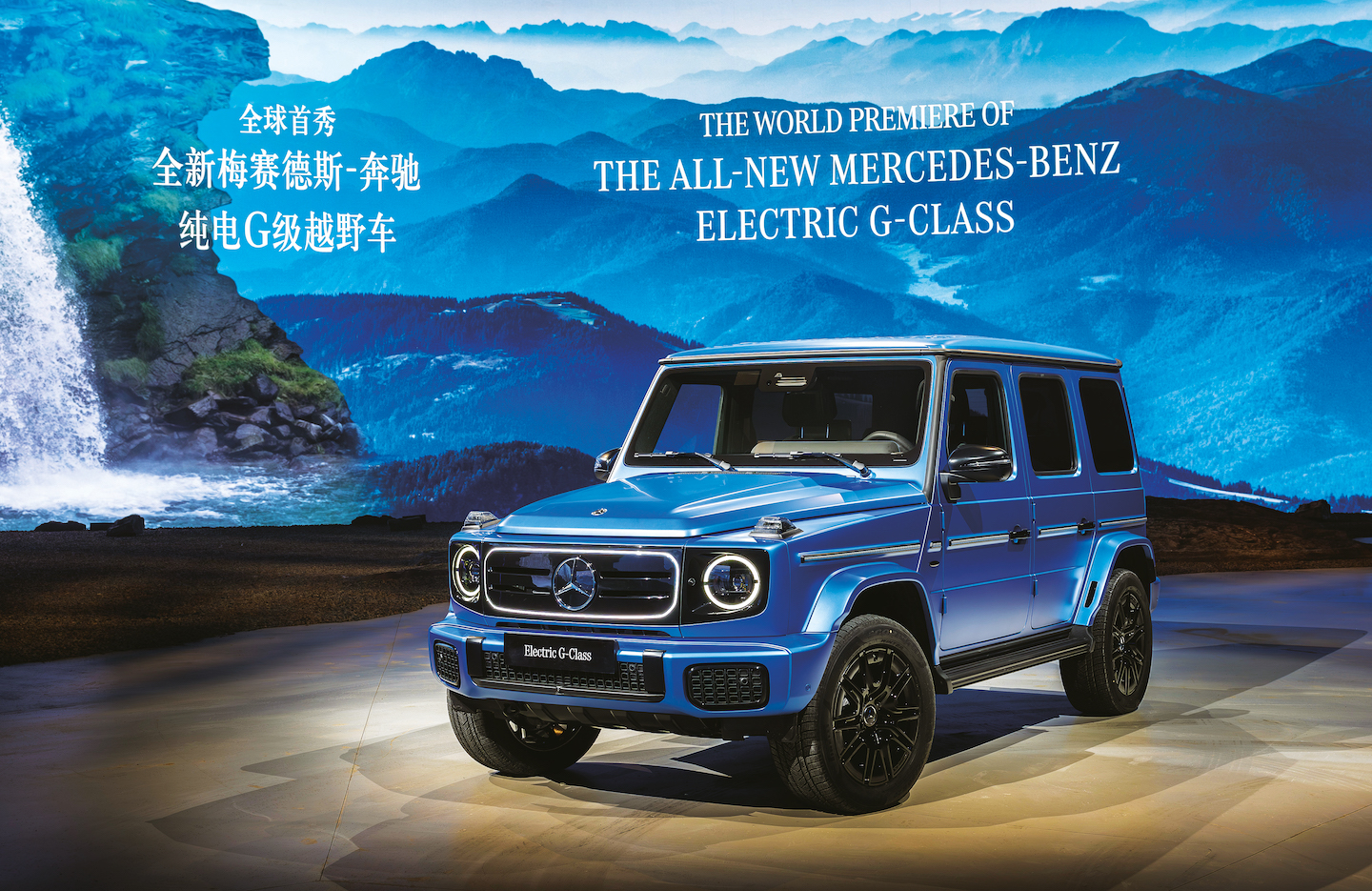
With four individually controlled electric motors and battery usable capacity of 116 kWh that translates to 473km of range, the G580 with EQ technology sets new standards for off-road capabilities (All photos: Mercedes-Benz)
As the automotive industry barrels into a reality that results in more choices rather than better motoring, car engineers have resorted to playing Dr Frankenstein, pumping life, nervously, into bodies of steel only to face the success or horror of their evolution. But one does not just experiment on an icon. When Mercedes-Benz debuted the G580 with EQ technology — an all-electric variant of the famed Geländewagen, or colloquially G-Wagen, that is just as capable as its combustion counterpart — last month, company executives and aficionados bandied about the question: Will this deluxe sports utility vehicle (SUV) with an Olympian physique still drive like a champ?
To understand this boxy bundle of contradictions is to delve into its storied heritage. In the 1970s, Shah Mohammad Reza Pahlavi of Iran, a major Mercedes shareholder who held the purse strings, suggested that the German stalwart of automotive innovation create a (frightfully) functional 4x4. The first modelling mock-up was created out of wood, instead of clay, as the designers in Stuttgart decided there would be no need for sweeping curves or swooping lines on a car intended for military purposes. Unfortunately, the Shah’s order was never fulfilled as he was deposed by the Islamic revolution in his country before the final product could reach him. While the last monarch of the Pahlavi dynasty never quite achieved world domination, the G-Wagen reigned supreme in its segment.
So desirable was this engineering marvel that, after the first commercially available model hit the autobahns, a request came from Pope John Paul II. The Holy Father asked for a special version of the four-door 230G with gilded trims, a floor panel raised by 40cm and a protected transparent dome made of bulletproof glass, so he could remain visible and close to the faithful during public appearances even in the most remote places. His Holiness, who from 1980 onwards used the G-Wagen as a papal transport vehicle or “Popemobile” for two decades, did not always wear a cape but he was certainly a crusader of style.
popemobile.jpeg
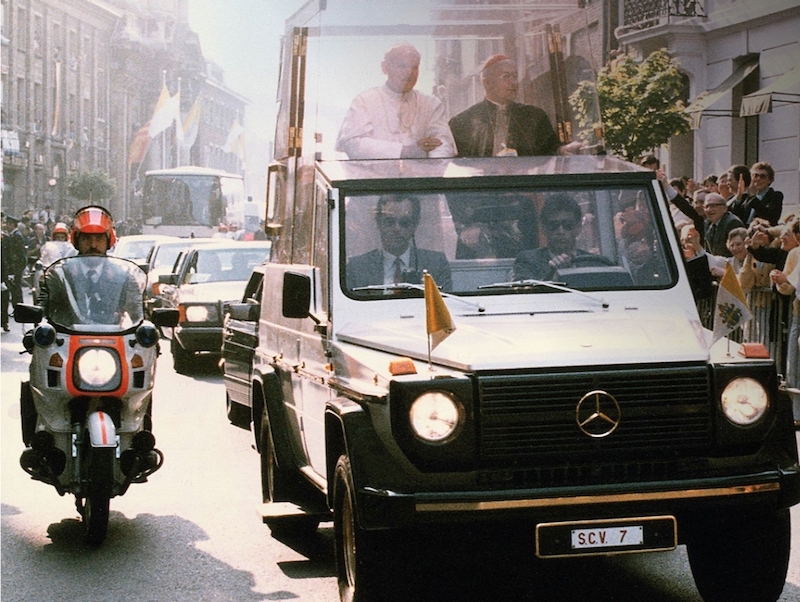
Having been in production in Graz, Austria, since 1979, the G-Class, henceforth known as “the G”, gained even more fans at the turn of the millennium when it muscled out the GL-Class that had tried to usurp the classic. Even as years went by, Mercedes kept its utilitarian façade, and with a bit of luxury lather, steadily transformed a highly specialised tank with battle-grade credentials and hardiness into a mode of transport aimed at a wildly different audience with diametrically varied driving demands.
The civilian moment for the G did not arrive, perhaps, until it saw an uptick in limited editions and exclusive iterations (the bizarre G63 AMG 6-wheeler, popular for dune climbing, or the Maybach-made G650 Landaulet convertible with massaging rear seats shall be discussed another day). From oligarchs to lovers of unwieldy paramilitary opulence, this Mercedes off-roader, required to prove itself 336 times on the challenging test track of Schöckl mountain in Graz, became enjoyable to drive on modern asphalt without losing any of its anachronistic affinities.
However, if you prefer to grind the gravel and cross canyons without spewing carbon and planet-toasting fumes from your tailpipes, Mercedes has just the electric option that even the most hardened petrolhead can get jazzed about.
G to E
Before the G-Class went electric, Mercedes-Benz CEO Ola Källenius, who has worked for the brand since 1993 in almost every part of the company, once teased, “I joked that it’s like the Birkin of Mercedes. Everybody wants one and the waiting time is really long. It may even be the most desirable car in our portfolio.”
That is if no one goes off the (bag) handle.
Unlike frustrated Hermès customers who struck out in their attempt to purchase the coveted piece and accused the French maison of holding it back for all but its premium clientèle, loyal followers of Mercedes were promised that the G580 with EQ technology — a clunky title, we know, that puts a stop to the EQ-naming scheme — would be worth the wait. The reasons are aplenty.
The US launch of this bank vault of an SUV at Los Angeles’ Franklin Canyon Park revved up a star-studded party attended by Bradley Cooper, Kendall Jenner, Tracee Ellis Ross, Trevor Noah, Selma Blair and a vivacious Travis Scott performing atop the new G580 on a stage floating in the middle of a lake. We were not there.
24c0124_003.jpg

But the simultaneous unveiling in Beijing’s 798 Art Zone ahead of Auto China 2024, where we saw, first-hand, legions of avid enthusiasts exulting and cheering for a beloved car on the verge of making history, was equally indelible. Although there were no significant changes to the design of the G580, everyone was eager to discover how the electric drivetrain will be a game-changer while the car upholds its DNA.
That DNA, from the thud the doors make when you slam them shut to the fact that it is built on the same ladder frame that includes an independent front suspension with double wishbones as the gas-powered G-Class, has been retained and updated for the digital era. The electric version, which can accelerate from 0 to 100kph in 4.7 seconds, will come with a wagon of nifty circus tricks, including a G-Turn that can perform a full 720° rotation on the spot, as well as a three-speed intelligent off-road crawl function that will keep the car at the optimal speed while navigating bumpy surfaces. It will remain stable on slopes up to 35° and has a maximum fording depth of 850mm.
24c0124_041.jpg
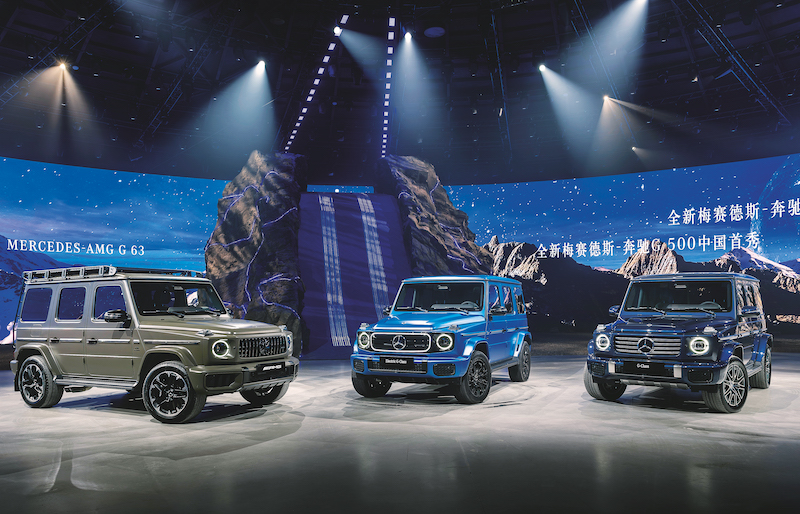
Of course, every grain or pebble poses a potential hazard to the two-tiered lithium-ion battery stowed away in the floor for low centre of gravity. As an alternative to the underbody skid plate made from steel or aluminium, a lighter “material mix” unique to the G580 prevents corrosion. Exterior-wise, it would be hard to pick out the EV from among its fuel-sipping stablemates, unless keen eyes can spot the illuminated accents on the grille, raised bonnet or the spoiler lip on the roof. A pleasant surprise, though, is the rear-mounted box, which no longer stores a spare tyre (you still can) but charging cables or snow chains.
We live in an cacophonous ecosystem of city noise and engine rumbles, an auditory cage match wherein the loudest sound wins. But a quiet car is a mixed blessing — how will one know when 6,800 pounds of metal is trundling down the road? To animate the monster, Mercedes has introduced the G-Roar (these memeable names have got to stop), a synthetic clamour that emits a deep bass and sonorous tone resembling its V8-powered siblings. An “aura” sound is also produced when you walk up to the vehicle and there is a special alert to signify charging has begun.
Body language
Icons, which provide ideals to live by, are valued because through them, people get to experience powerful myths. Brands then deliver these stories to us in tangible forms, like Andy Warhol’s soup can, the ubiquitous Coca-Cola bottle and, in the automotive realm, the G-Class.
“An icon is what you can only observe by going back in time. And time will prove if one’s work can be turned into something iconic. With technology, everyone is trying to create a product that only they would own. But how many are leaving a mark? Making an impression is this: I go to a motor show, and I go back to my hotel. At breakfast tomorrow, I will be able to sketch the car exactly the way I remembered it,” says Mercedes-Benz designer Robert Lešnik, who still considers the CLS an enduring design inspiration.
24c0123_076.jpg
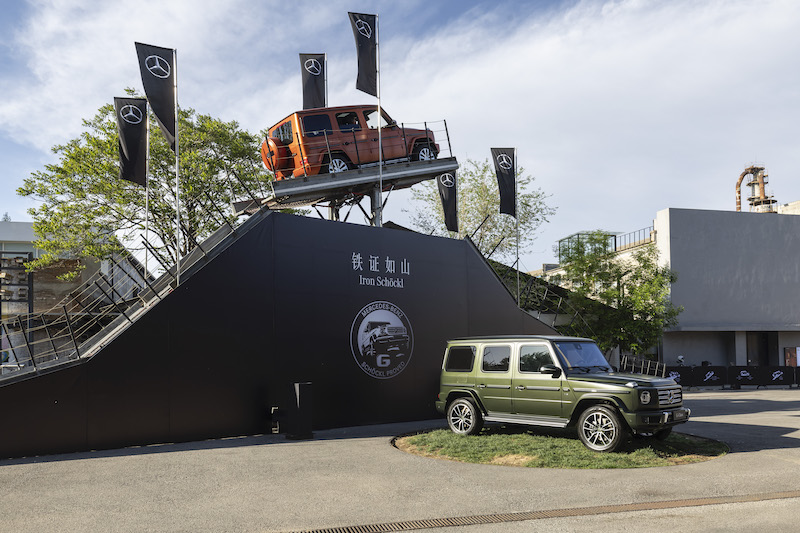
Ready or not, the curtain is going up on EVs as an estimated 500 Chinese car makers, urged by the country’s Made in China 2025 industrial master plan, are vying to snag a larger slice of the global automotive market. Futuristic styling cues, whereby every conceivable angle is tailored to flatter, are imbuing cars made in the world’s second-most populous country with extra desirability. But will these vehicles with a spaceship-like cabin risk looking too homogeneous?
“We need to be realistic. Those days when we only had three competitors are gone. Yes, you can take a look at the market, see 50 cars promoting the same design and still, nothing catches your eye. But there are also models sold in China that we will never see in Europe, and vice versa. We can’t be designing something to just hit a specific market. If other car makers are doing a good job, we just have to do better. We can’t predict the future — I don’t know what will happen five years from now but in the end, it’s the customers who will decide. We are already very much in the midst of the [electrification] change,” says Lešnik.
This, perhaps, drives home Mercedes’ point about giving its EVs a more traditional look as the brand aims to blur the line between its electric and combustion offerings as people are now “more used to electric cars”. The G580 is a key pointer to this progression, Lešnik asserts, explaining that “one should not spot its difference with an internal combustion engine car from 20m away”.
EVs are no longer a curiosity but Mercedes, lauded for offering a flavour of the past in cars of the future, does not always tread the common path, sometimes to its advantage. The electrified G-Class, which continues to aid mankind’s quest to boldly go where no car has gone before, is a testament to that.
Hot on the wheels
Mercedes-Benz also unveiled new road runners at Auto China 2024
sidebar_must_put.jpg
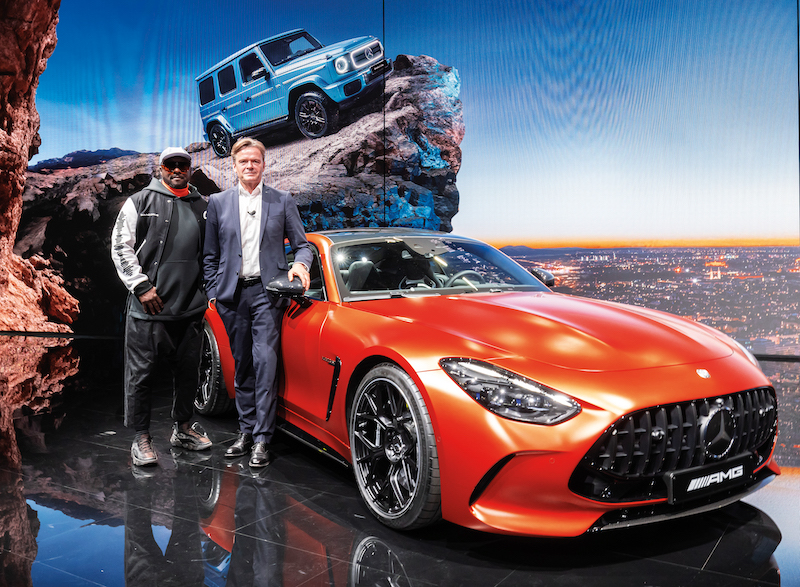
Apart from the all-new electric G-Class, one of the year’s biggest motoring events also served as the backdrop for another world premiere: The new Mercedes-AMG flagship GT 63 S E Performance, first unveiled on the sidelines of the Formula 1 weekend in Shanghai. The introduction to the extremely powerful hybrid drive that sprints from 0 to 100kph in just 2.8 seconds was graced by Black Eyed Peas rapper and tech entrepreneur will.i.am, the protagonist of the car’s campaign. Mercedes teamed up with the musician to develop a technology called MBUX Sound Drive that lets owners use their car both as a musical instrument and a recording studio.
Concept cars allow designers to take the shackles off to build dreams and possibilities the public can identify with. But there is also a good chance of them making it on the road. Such is the case with Concept CLA Class, which provides close-to-production insight into the upcoming family of vehicles that will redefine the class with forward-looking sustainability. With an anticipated range of more than 750km in a single charge, this model is trained on the new operating system MB.OS that uses supercomputing and artificial intelligence to facilitate new levels of personalisation, safety, convenience and automated driving.
sidebar_main.jpg

Apart from bolstering its commitment to expanding the innovation and R&D network in China, Mercedes also recast its focus on localisation by introducing the new E-Class L, in which its extended wheelbase and distinctive design elements have been adapted for the Chinese market. On the other hand, fans of the Maybach will be pleased with the launch of the S-Class and GLS Night Series that combines aesthetics with darkened motifs for a truly distinguished and more progressive appearance.
This article first appeared on May 20, 2024 in The Edge Malaysia.


